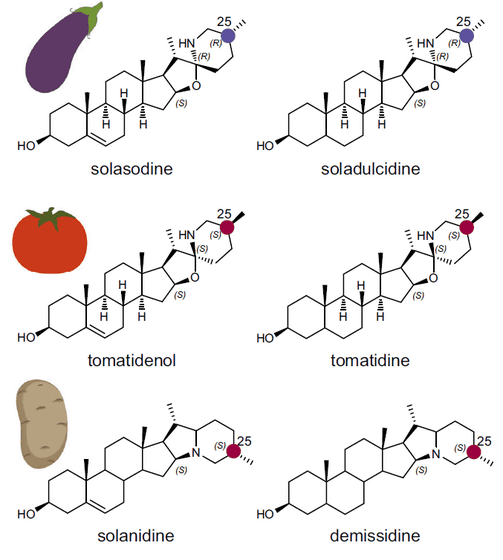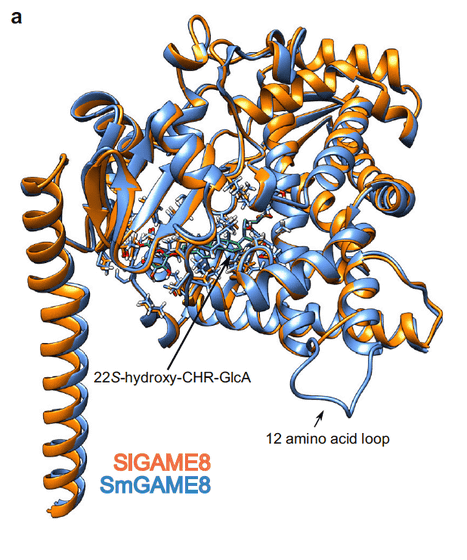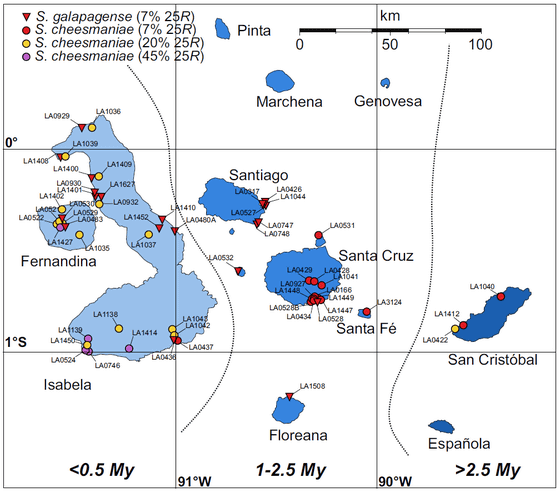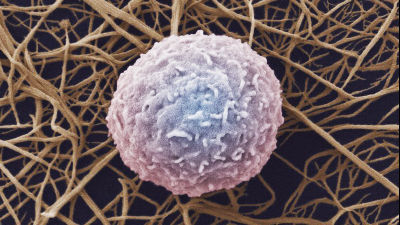Galapagos Island tomatoes are degenerating

A study published in the academic journal Nature Communications has revealed that wild tomatoes growing on the young volcanic islands of the Galapagos Archipelago are shedding evolutionary traits they had acquired over millions of years and reviving the primitive chemical defense abilities of their ancestors. This phenomenon is being noted as an example of 'reverse evolution.'
Enzymatic twists evolved stereo-divergent alkaloids in the Solanaceae family | Nature Communications
Tomatoes in the Galápagos are quietly de-evolving
https://phys.org/news/2025-06-tomatoes-galpagos-quietly-de-evolving.html
The team, led by Adam Jozwiak of the University of California, Riverside, found that the wild tomatoes of the Galapagos Islands, which evolved from ancestors carried by birds from South America, produce toxic alkaloids that were present in their ancestors that were closer to eggplant than modern tomatoes.
Steroid glycoalkaloids (SGAs) are natural chemicals found primarily in plants of the Solanaceae family, such as tomatoes, potatoes, and eggplants. Structurally, they consist of a steroid-based skeleton called an 'aglycone' to which sugar is bound.

For plants, SGAs serve as important defenses against insects, fungi and herbivores, acting like built-in insecticides, but they are also toxic to animals, including humans, in high concentrations and therefore must be controlled for food safety.
SGAs are broadly divided into two types, '25S type' and '25R type', depending on their three-dimensional structure. For example, tomatoes and potatoes mainly produce 25S type SGAs, while eggplants produce 25R type SGAs. This slight difference in three-dimensional structure is thought to have a significant effect on the toxicity and biological activity of SGAs.
The enzyme that creates this difference in three-dimensional structure is GAME8. GAME8 determines the three-dimensional structure by specifically hydroxylating one of the methyl groups at the end of the cholesterol molecule that is the basis of SGA.

It is believed that in the course of evolution, the ancestors of Solanaceae plants originally possessed the GAME8 enzyme that produces the 25R type, but through genetic mutation, some species, such as tomatoes, acquired the ability to produce the 25S type. The tomatoes that grow in colonies on the Galapagos Islands have reacquired the gene for the 'GAME8 enzyme that produces the 25R type,' which should have been lost during the course of evolution.
According to the research team, this phenomenon does not occur uniformly across the Galapagos Islands, but is strongly correlated with the geography and age of the islands.
For example, tomatoes on the relatively old and biodiverse eastern island produced modern '25S' alkaloids. Meanwhile, tomatoes on the younger western island, with its more volcanic and harsh environment, contained a higher proportion of ancestral '25R' alkaloids. This led the researchers to speculate that the harsh environment of the western island may have acted as a selective pressure to revive ancestral alkaloids that may have a stronger defensive effect, promoting reverse evolution.

The research team argues that the results of this study show that evolution is not necessarily a unidirectional process, but a flexible process that reuses past genetic information in response to changes in the environment. The team hopes that the knowledge that the product can be controlled by slightly modifying the function of the enzyme may be applicable in the future to the development of less toxic crops, the design of new varieties resistant to pests and diseases, and even the engineering production of new medicines.
Related Posts:
in Science, Posted by log1i_yk







